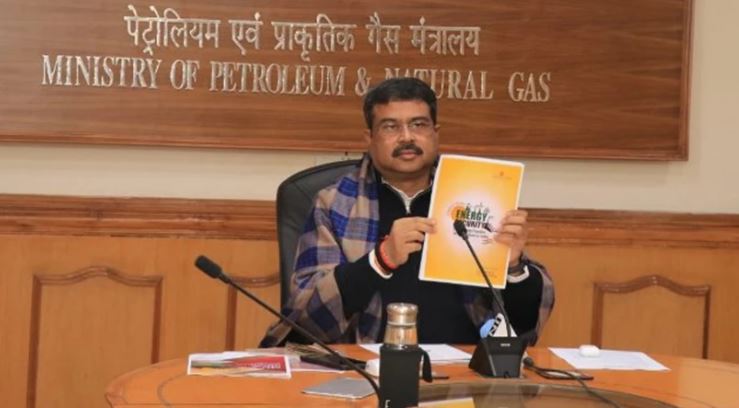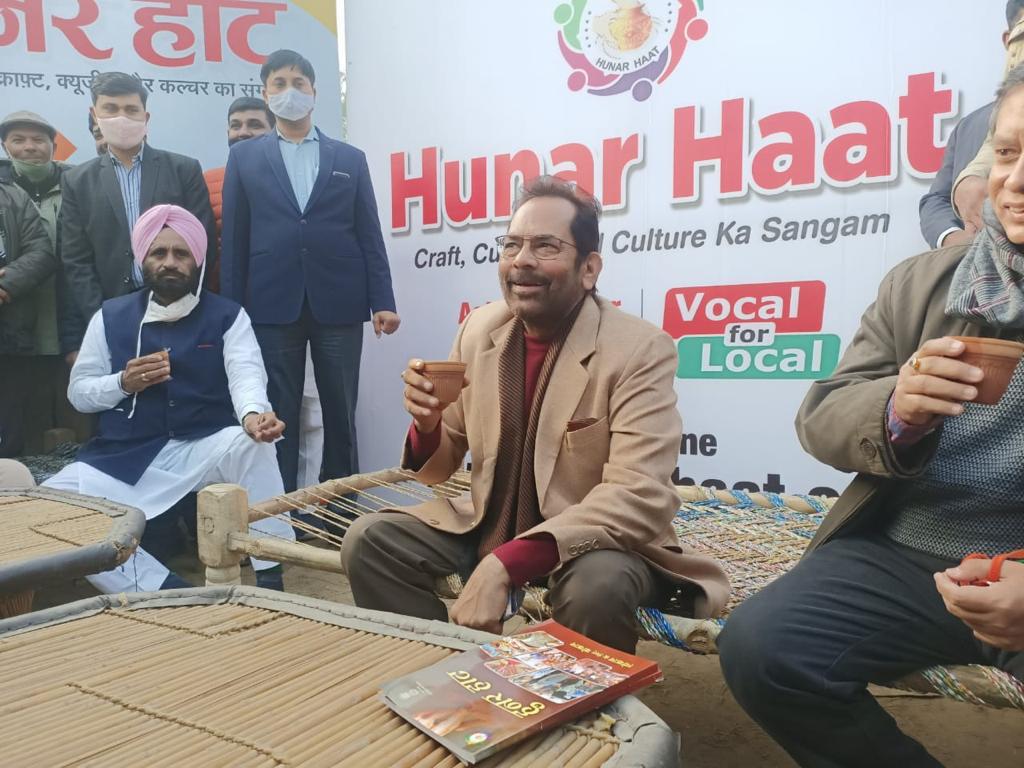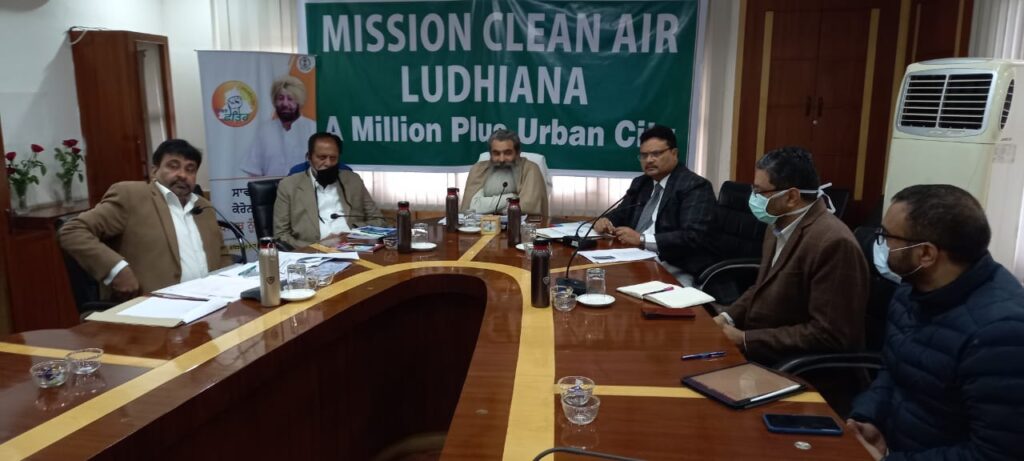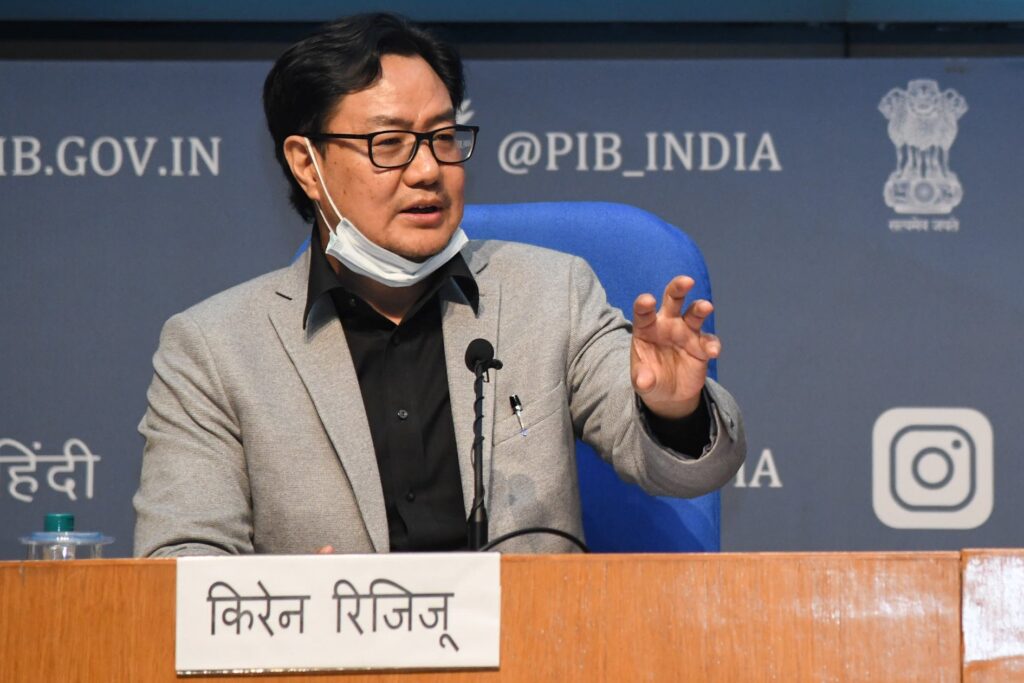GoI developing roadmap for self-reliant energy generation for Aatma Nirbhar Bharat, says Pradhan

Solution World Bureau
New Delhi, Dec 17: Minister of Petroleum & Natural Gas and Steel Dharmendra Pradhan today said that on the energy front, we are developing a clear roadmap of Aatma Nirbhar Urja for Aatma Nirbhar Bharat. Addressing the ASSOCHAM Foundation Week 2020 today on “Energy Transition to Fuel India’s Growth Path”, he invited India Inc. to join the Atmanirbhar Bharat Urja initiatives and said that we have to ensure energy justice and end energy poverty in the country. This means more energy to improve the lives of Indians with a smaller carbon foot-print. He said that our energy sector will be growth-centric, industry friendly and environment conscious. He said that the energy sector will continue to play a pivotal role in our national development, and in realization of the 5 trillion-dollar economy.
The minister said that at the core of the Government’s efforts is to achieve a growth path that is sustainable, keeping in view our national priorities and resources. He said that speaking at the Climate Ambition Summit last week, Prime Minister Narendra Modi announced that Centennial India in 2047 will not only meet its own targets, but will also exceed your expectations.
He said that there is an all-of-the Government approach to realize the energy transition road map. “Our Government is converting Covid-impacted challenges into opportunities. We have initiated the most significant reforms as envisoned by Prime Minister Modi in building an Aatmanirbhar Bharat or self-reliant India. We have already initiated reforms to transform India from being just a passive market to an active manufacturing hub at the heart of global value chains. We are partnering with the industry and other stakeholders in realizing this vision,” he added.
Pradhan said that India is now among the fastest growing large economies of the world with a strong determination to end poverty, including energy poverty, in the country. This demands rapid expansion of energy consumption & energy security. “Our Government is committed to meet both these ends in a sustainable manner,” he added.
He said that during the last six years, India’s energy landscape has undergone a transformational change. We are now the third largest energy consumer in the world after US and China.
Pradhan said that the Covid pandemic continues to inhibit conduct of normal activity. But there are clear indications of improvements and a gradual increase in activity across all States and sectors of our economy. “We see a reflection of these efforts in how India’s energy sector has bounced back with remarkable resilience. Our energy demand has almost recovered back to pre-Covid levels, particularly for petroleum products, on the back of rejuvenation of economic activities. “
He said that the energy transition road map of India has been outlined by Prime Minister Narendra Modi, who has defined seven key drivers: Accelerating efforts to move towards a gas-based economy, Cleaner Use of Fossil Fuels, Particularly Petroleum And Coal; Greater reliance on domestic sources to drive biofuels, Achieving renewables target of 450 GW by 2030, Increasing contribution of electricity to de-carbonize mobility, Moving into emerging fuels including hydrogen; and digital innovation across all energy systems.
The minister said that there are enormous opportunities in the energy sector, and there is a lot more that the Indian industry needs to embrace as partners in progress. He talked about a paradigm shift in the philosophy of the Government from revenue generation to production maximization to enhance the domestic production of crude oil and natural gas. Several policy initiatives have been taken and reforms initiated, including facilitating the ease-of-business for the Exploration & Production sector. “We now allow 100% FDI in exploration and production projects and also permit 49% FDI in public sector refining under the automatic route. We have created a friendly tax regime for Sovereign Wealth and Pension Funds. These reforms are translating into increased FDI flow in the sector.”
Pradhan said that we are ushering a gas-based economy by increasing the share of natural gas in India’s primary energy mix from 6.2% to 15 % by year 2030. Prime Minister has announced last year the target of ‘One Nation One Gas Grid’. India is set to expand the natural gas grid to 34,500 km, by adding another 17000 km of gas pipeline. “Our regasification capacity of existing 42 MMTPA will be expanded to 61 MMTPA by year 2022. Natural gas marketing reforms have been announced to prescribe standard procedure to discover market price across various contractual regimes through a transparent and competitive manner. Also, we have rationalized tariff to make natural gas affordable in every part of the country.” The Minister also talked about launch of India’s first automated national-level gas trading platform and expansion of coverage of City Gas Distribution projects to cover 232 Geographical Areas spread over 400 districts, with a potential to cover about 53% of country’s geography and 70% of population.
The minister said that we are adopting clean mobility solutions, with greater use of LNG as a transportation fuel including long haul trucking. On the investments front, he said that we have envisaged a spend of $60 billion in creating gas infrastructure till 2024, including for pipelines, LNG terminals and CGD networks.
Pradhan said that the Government has embarked on a massive programme on alternative fuels for enhancing India’s energy sustainability. “We are tapping into huge biomass potential through National Biofuels Policy. Lndia’s Oil Marketing Companies are ahead of the curve having already committed to set up twelve 2G bio-refineries and ethanol blended petrol. We are boosting rural economy by waste to wealth generation, under the Sustainable Alternative Towards Affordable Transportation (SATAT) initiatives. We are setting up of 5000 CBG plants by 2023-24 with production target of 15 MMT with an investment of about US $ 20 billion. Our Government is also giving a push to adopt hydrogen fuel mix. Major oil and gas companies have taken a lead by promoting International Solar Alliance in addition to installing renewable energy capacities through independent efforts.”
“Hunar Haat an effective platform to strengthen mission of “Aatma Nirbhar Bharat” and commitment to “Vocal for Local”

Solution World Bureau
Rampur (Uttar Pradesh), Dec 17: Union Minister for Minority Affairs Mukhtar Abbas Naqvi today said in Rampur (UP) that “Hunar Haat” has become an effective mission of the Government to provide “Backup to Brilliance” and “Encouragement to Expertise”.
While addressing a press conference on the eve of “Hunar Haat”, being organised from December 18 to 27 at Numaish Ground, Panvadiya, Rampur (UP), Naqvi said that besides fulfilling the commitment to “Aatmanirbhar Bharat”, “Hunar Haat” has also proved to be an effective platform to provide large scale employment and employment opportunities to master artisans and craftsmen from every corner of the country.
The Union Minister said that “Hunar Haat” at Rampur will be inaugurated by Union Minister for Road Transport & Highways and Micro, Small and Medium Enterprises Nitin Gadkari on Friday (December 18). Khadi and Village Industries Commission Chairman Vinay Kumar Saxena; Sidharth Nath Singh, Uttar Pradesh Cabinet Minister for Khadi and Villages Industries and MSME and Minister for State, Jal Shakti, Baldev Singh Aulakh will be the Chief Guests.
Naqvi said that “Hunar Haat” has been proved to be an effective platform to strengthen Prime Minister Narendra Modi’s mission of “Aatma Nirbhar Bharat” and commitment to “Vocal for Local” by promoting and encouraging indigenous products of master artisans and craftsmen.
He said that artisans and craftsmen from Rampur had been given opportunity at various Hunar Haat organised across the country, but now Hunar Haat has reached at Rampur itself. Artisans and craftsmen from every corner of the country have come here with their indigenous exquisite handmade products.
Naqvi said that while on one hand, indigenous products of master artisans are a major attraction at “Hunar Haat” in Rampur, on the other hand people will also enjoy traditional delicacies from almost every corner of the country at this “Hunar Haat”. Besides, different cultural programmes on the theme of “Jaan Bhi, Jahaan Bhi”, to be presented every day by renowned artists, are also a major attraction. This “Hunar Haat” will be an occasion to live the feeling of communal harmony and the country’s “Unity in Diversity”.
He said that master artisans and craftsmen from Uttar Pradesh, Rajasthan, Delhi, Nagaland, Madhya Pradesh, Manipur, Bihar, Andhra Pradesh, Jharkhand, Goa, Punjab, Uttrakhand, Ladakh, Karnataka, Gujarat, Haryana, Jammu-Kashmir, West Bengal, Maharashtra, Chhattisgarh, Tamil Nadu, Kerala and other places of the country have brought their indigenous products made with wood, brass, bamboo, glass, cloth, paper, clay etc.
Naqvi said that magnificent handloom products, wooden and clay toys, postal painting, metal craft, jewellery, Khadi products, Rampuri Knife, Rampuri Violin, black pottery, herbal products, dry flowers, wooden iron handicraft, oil painting, iron art work, Bagh Print, cane and bamboo products are available at under one roof at “Hunar Haat” in Rampur.
On December 18 and 19, fascinating Ramleela will be performed on the theme of “Shri Ram Rajya” by Sushil Ji Maharaj at “Hunar Haat” in Rampur. Besides, renowned artists from music and other art field such as Rekha Raj and Prem Bhatia (20th Dec); Bhupendra Singh Bhuppi (20th Dec); Smita Rao Bellur (21st Dec); Aslam Sabri (22nd Dec); Shibani Kashyap (23rd Dec); Raju Srivastava (24th Dec); Ahsan Qureshi (25th Dec); Humsar Hyat Nizami (26th Dec) will enthral the audience with their different cultural programmes to be organised every day at “Hunar Haat”. On 27th Dec, “Kavi Sammelan” will be organised where the audience will be mesmerised by renowned poets such as Dr Anamika Ambar, Popular Merathi, Dr Sunil Jogi, Dr Suresh Awasthi, Nikhat Amrohavi, Shambhu Shikhar, Manveer Madhur, Dr Sarita Sharma, Manjar Bhopali, Sudeep Bhola and Gajendra Solanki.
He said that the “Hunar Haat” at Rampur is also available at virtual and online platform http://hunarhaat.org. People of the country and abroad will be able to buy “Hunar Haat” products digitally and online also.
Naqvi said that “Hunar Haat”, which has provided employment and employment opportunities to more than 5 lakh Indian artisans, craftsmen, culinary experts and other people associated with them in the last about 5 years, have become popular among the people.
The next “Hunar Haat” will be organised at Shilp Gram, Lucknow (UP) from January 22 to 31with the theme of “Vocal for Local”.
Naqvi said that in the coming days, “Hunar Haat” will be organized at Jaipur, Chandigarh, Indore, Mumbai, Hyderabad, India Gate-New Delhi, Ranchi, Kota, Surat/Ahmedabad, Kochi and other places.
Punjab govt’s in-principle approval for IOCL’s CBG plant in Patiala

Solution World Bureau
Chandigarh, Dec 17: The Punjab Cabinet led by Chief Minister Capt Amarinder Singh on Thursday gave in-principle approval for setting up of a Compressed Bio Gas (CBG) Plant by Indian Oil Corporation Ltd. (IOCL) at the now closed Cooperative Sugar Mills at Rakhra in Patiala.
The plant, to be developed in collaboration with Sugarfed, will help reduce stubble burning through use of paddy straw for bio gas generation, and will also nurture soil fertility through organic manure production.
The Cabinet also authorized the Cooperation Minister to settle all terms & conditions, including that of Land Lease Agreement in respect of 25 acres or more area of the closed sugar mill, to be provided to IOCL for setting up the CBG Plant. The Minister has been authorized to decide on the lease terms and conditions with the approval of the Chief Minister.
According to a spokesperson of the Chief Minister’s Office, the upcoming CBG plant, which will create direct and indirect employment opportunities, will have capacity of 30 Ton CBG (Compressed Bio Gas) production, with daily feedstock capacity of approximately 300 tons of paddy straw, per day. It would also generate organic manure to the tune of approx. 75,000 tons per annum.
Moreover, CBG being an environment-friendly fuel with the potential to reduce Greenhouse Gas (GHG) emissions by 98%, the plant would help in minimising dependency on fossil fuels, and thus become a major contributor to promoting circular economy.
The CBG Plant would also be instrumental in reducing stubble burning in fields, thereby containing air pollution in Punjab, besides considerably help in improving the general living conditions. It will also thus help in augmenting the savings of farmers, as well as in restoring soil fertility and carbon content.
Apart from these, it would also provide additional income or revenue to State Government through GST on sale of CBG produced from the proposed plant.
At the Cabinet Sub-committee meeting, headed by Cooperation Minister, IOCL had informed the state that the project would involve production of Bio Gas from rice straw and other biomass at an estimated cost of Rs. 180 Crores in the first instance. IOCL would procure rice straw (Parali) from farmers through Cooperative Societies. The rates for purchase/supply of rice straw would be settled after mutual negotiations.
As the Cabinet Sub Committee had already recommended the setting up of new projects in PPP Mode on BOT basis for conversion of wheat/paddy straw to renewable energy or any other project at the closed cooperative sugar mills in the interest of the State, Sugarfed was asked to go ahead with the setting up of a Bio Gas project at Patiala in collaboration with IOCL.
Punjab to start charging process fee for registration of new motor vehicle models

Solution World Bureau
Chandigarh, Dec 17: On the lines of neighbouring states, the Punjab Cabinet on Thursday gave the nod for charging process fee for registration of a new model of a motor vehicle or its variants, or CNG or LPG kit approval or electric vehicles in the state.
The decision was taken at a virtual meeting of the cabinet chaired by Chief Minister Capt Amarinder Singh.
The Cabinet gave approval to amend the Punjab Motor Vehicles Rules, 1989 by inserting rule 130-A below rule 130 for charging a processing fee of Rs. 5000/- from manufacturers of motor vehicles or their authorized dealers, to give approval for registration of a new model of motor vehicle or its variants or LPG or CNG kit or electric vehicle in Punjab on the pattern of Haryana.
The Cabinet decided that the Transport Department (Non-Commercial Wing) would give approval for registration of a new model of motor vehicle, or its variants, in the State to the manufacturers of motor vehicles or their authorized dealers on the basis of the type of approval certificate issued by the authorized testing agencies which are registered under rule 126 of the Central Motor Vehicle Rules, 1989.
It may be noted that currently no processing fee is being charged from the manufacturers of motor vehicles or their authorized dealers by the Punjab government in respect of the said approval of registration in the State, even though the same is being charged by the neighbouring states of Haryana, Himachal Pradesh, Jammu & Kashmir and Union Territory of Chandigarh.
Govt gears up for providing clean air to Ludhiana residents

Solution World Bureau
Ludhiana, Dec 17:
Saying that there is a grave problem of air pollution in Ludhiana, Punjab Cabinet Minister Bharat Bhushan Ashu has said that various stakeholder departments must play proactive role for the successful implementation of Clean Air Mission for Ludhiana which will pave a great path towards the improvement of quality of air thereby positively effecting the health and life of the citizens of the city. He has also directed the concerned officials to complete their tasks towards this collective project in a time bound manner.
In order to deliberate on the issues related to control of air pollution of the city and to discuss the various aspects of National Clean Air Programme (NCAP) and the scheme of Government of India (GoI) for improvement of air quality of 42 Million Plus Urban Cities as per 15th Finance Commission, a meeting was held under the Chairmanship of Cabinet Minister Ashu along with Ludhiaa Mayor Balkar Singh Sandhu, Commissioner Municipal Corporation Pardeep Kumar Sabharwal and Senior Officials from various stake holder departments at Municipal Corporation Zone-D Office, here on Wednesday.
Sandeep Bahl, SEE, Punjab Pollution Control Board (PPCB), gave an introduction on the topic and briefed the members present in the meeting about the various issued related to air quality management of the city and about the schemes of MoEF&CC, GoI for improvement of air quality of non-attainment cities. He informed the stakeholder departments that Ludhiana is one of the nine non- attainment cities in state of Punjab and air quality management plan and action required as per action plan has already being approved by CPCB.
The action plan states various stake holders like Municipal Corporation, Ludhiana, Department of Transport, Dept. of police, Dept. of Forest, Dept. of industries and Commerce, PWD, PSCST, Deptt. of agriculture, District administration and their responsibilities. Further, various activities that are being done under NCAP that are being carried out were briefed to the participants during the meeting.
He said that GoI has sanctioned Rs 10 Crore under this scheme to Punjab Pollution Control Board, out of which Rs 6 Crore has been released by the MoEF for the city of Ludhiana under NCAP. There are proposals to install 4 CAAQMS with 8 display screens in addition to one already installed at Ferozepur Road, Ludhiana and conduct various public awareness programme along with actions as per approved action plan. In addition to this, source apportionment/emission inventory study was conducted by PSCST and TERI as per which various air pollution sources and their contribution towards the pollution load has been categorized. As per the study, road dust contributes 28% of the air pollution, Bio-Mass burning 18%, Vehicular pollution 16% and the industrial pollution contributes 35% towards the total air pollution load of the city. The study presented short, medium and long term recommendations for improvement of air quality in the city of Ludhiana including action plan to manage road dust, industrial, transport and other sectors.
Amanjit Singh, Consultant, CPCB for NCAP programme gave a detailed presentation on both the schemes. He briefed the participants in the meeting that the NCAP scheme was launched by MoEF&CC in Jan 2019 with aim to reduce PM10 values by at least 20% from 2017 levels.
Now, as per 15th Finance Commission funds have been allocated to Urban local bodies for improvement of air quality, under this Rs 52 Crore have been allocated to Ludhiana City, out of which Rs 26 Crore is going to be released to the Municipal Corporation, Ludhiana. Under this assessment criteria has been defined based on a) Strengthening of institutional framework b) Cause analysis of air pollution c) Progress on action plan d) Quantification of air quality.
Officials from various stake holder departments were briefed about their roles and responsibilities under these programs and MC, Ludhiana was advised by the Chairperson to prepare DPR for utilization of funds received by MC, Ludhiana from GoI which are to be utilized towards Handling and disposal of municipal solid waste effectively, Improvement of road infrastructure for smooth traffic movement, Regular and mechanical cleaning of roads, Increasing green cover in city, Imposing ban on burning of garbage and Providing intelligent traffic lights for smooth traffic movement.
Pardeep Kumar Sabharwal, Commissioner, Municipal Corporation, Ludhiana said that with the effective partnership of all the stakeholder departments, these schemes will be implemented successfully and will certainly bring down the air pollution load of the city.
India pledges USD 1 million to WADA for scientific research to ensure Clean Sport globally

Solution World Bureau
New Delhi, Dec 17: Taking a step further to ensure an atmosphere of Clean Sport globally, India has pledged a sum of USD 1 million to the World Anti-Doping Agency (WADA) towards the global agency’s scientific research budget, which will allow WADA to develop innovative anti-doping testing and detection methods. The money will also be used to further strengthen WADA’s independent Investigations and Intelligence Department.
India’s contribution of USD 1 million is the highest among contributions made by other world governments, including China, Saudi Arabia and Egypt. The total contribution of all member nations will be matched by an equal sum by the International Olympic Committee (IOC) to create a corpus of USD 10 million. The decision to build this corpus was made at WADA’s Fifth World Conference on Doping in Sport held in Katowice, Poland in 2019. This contribution is over and above the annual contribution made to WADA’s core budget by India.
Writing to WADA President Witold Banka about the contribution, Union Minister of Youth Affairs and Sports, Kiren Rijiju said, “I am happy to share with you that the Government of India is pledging a “one-off” financial support of USD 1 million to this WADA Fund for scientific R&D and (I&I) with the hope that this contribution from India will boost the efforts to achieve the target of USD 10 million for this Fund.” In a previous meeting with the WADA President, held on September 8, 2020, through video conference, Rijiju had stressed on the need for Clean Sport and the Indian Government’s commitment to strengthen the anti-doping programme globally. He had also assured India’s support to WADA in the form of scientific expertise and resources.
Lauding the co-operation of member countries, WADA President Witold Banka said in a press release, “This is a massive boost for WADA and for Clean Sport. The agency is grateful to the Government of China, Egypt, India and Saudi Arabia for supporting the protection of sport in this way. These generous contributions can be seen as a strong commitment from these nations and will be put to good use enhancing scientific research, as well as the work of WADA’s independent (I&I) department. Both areas have delivered significant achievements in recent years and these additional resources will contribute greatly towards WADA’s mission for doping-free sport.”